PURPOSE This study aimed to identify the dimensions of sport brand authenticity and to develop a valid and reliable scale for measuring such dimensions. METHODS Along with a sequential mixed method design, qualitative researches were conducted (a literature review on brand authenticity and the inherent value of sport, 5 one-to-one expert interviews, and a Delphi survey of 10 researchers). Based on the qualitative research results, an EFA (n=304), 2 times CFA (1st: n=304, 2nd: n=311), and correlation analysis using the other scale (brand relationship quality, brand attachment, brand credibility) were conducted to test reliability, construct validity, and criterion-related validity. RESULTS In the qualitative research results, 8 dimensions with 36 items were extracted; however 6 dimensions (originality, connectedness, legitimacy, authority, sport spirit, and expertise) with 28 items were identified as appropriate structures from EFA and CFA, and the relations between all the dimensions and other scales related to consumer attitude were statistically significant in the correlation analysis. CONCLUSIONS The findings suggest that the scale in this study could provide a new and specific perspective on sport brand authenticity, which is constructed using a general aspect and a sport specific aspect, and an understanding of the concept of sport brand authenticity in other sport industries.
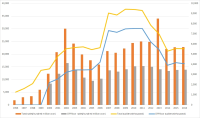
Purpose This research analyzed the Korean and Japanese cycle racing businesses by comparing each country’s total profits and total audience from 1996 to 2016. Methods In this process, it used total profits data and total audience data from 1966 to 2016. The data showed an economic correlation between Korean and Japanese cycle racing businesses by using each county’s economic variables. Results According to regression analysis, the income and audiences of Korean cycle racing industry has been increased as their income level has been increased. However, Japanese cycle racing generally has negative effects between income level and other variables except audiences. Moreover, aging population affects negatively to Korean cycle racing industry. In contrast, aging population is less affects to Japanese cycle racing industry. Furthermore, improvement of employment and unemployment rate affects negatively to Korean cycle racing industry. As a result, Korean cycle racing industry looks like a gambling. On the other hands, Japanese cycle racing industry becoming one of leisure sports industry. Conclusions Korean cycle racing industry has to examine closely Japanese’s restructuring method & result. Also, they have to analyze closely Japanese’s sociocultural variables which explain decreasing profits and increasing audiences. In other words, Korea cycle racing industry needs to various methods to becoming leisure sports industry.

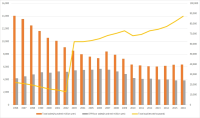
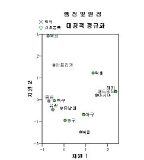
To activate the export of defense industry, our government approach a niche market by various advertising and revising policy. However, techniques of current Korea defense industry are difficult for market development of various aspects. Thus a new approach of overcoming existing export marketing strategy is needed. this study presents a strategy for exporting country, which is to activate the export of defense industry through military-sports diplomacy. The military-sports diplomacy is chosen because several cases confirm the sports diplomacy is an effective instrument which can develop political relationship between countries. a research needs to be done to check if Export target countries' preference for sports and possibilities of supporting should be investigated. by combining experts' opinion result using correspondence analysis, the following analyses of defense industry export activation strategy via Sports-diplomacy can be suggested. Overall, Sports policy action to expanse Export target geographical areas is strengthening ties for using soccer, badminton, hockey sports with each other. Detail, sports policy in the proportion of low-country exports must be to use badminton, hockey, rugby which prefer in asia area. and sports policy in the proportion of exports to the high country must be to use soccer, basketball, field and track events which prefer in Africa and Central and South America. area. In suggestion, The research concluded that information exchange between Defense Acquisition Program Administration and Korea military sports organization is needed, and the compatibility of exporting weapons to target countries is a priority while executing sports diplomacy.


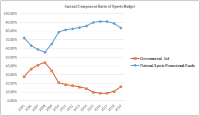
Purpose This study focused on analyzing the policies regarding operation of Sportstoto, a sole legal sports betting business in Korea. Methods In order to fulfill the research goal, literature review on reports, articles, and statistics from Ministry of Culture, Sports and Tourism, National Gambling Control Commission, Korean Sports Promotion Foundation, and other precedent studies was conducted. Results Currently Sportstoto fails to maintain its competitiveness due to inconvenient betting process, lack of product diversification, and low payout rate, resulting in the growth of illegal sports gambling. In addition, governmental aid for sports budget has diminished consistently, while at the same time the revenue cap regulation for betting industry restrains the development of Sportstoto and disturbs the gathering of sports budget, which appears to be a policy contradiction. Moreover, there are no specific guidelines for the expenditure of Sportstoto revenue which function as a budget. Conclusions This study suggests three ideas to overcome these problems. First is the alleviation of regulation in non-monetary area so that Sportstoto can improve its competitiveness against illegal sports gambling. Second is the clear establishment of policy regarding sports budget, either to foster Sportstoto as a fundraising business, or to enlarge governmental allocation for the budget. Lastly, institutional management must be provided for the expenditure of Sportstoto revenue as to follow government’s sports policies.

PURPOSE This study presents policy implications for a Korean sports commission’s introduction and the strategies to realize it. METHODS As an important policy tool, a sports commission system attracts large-scale sports events, revitalizes local economies, and promotes the sports industry’s sustainable development. Such an introduction’s necessity and direction were explored through analysis of overseas cases and interviews with experts. First, the study examined the concept of a sports commission system, along with major overseas cases and derived policy implications to present a model suitable for Korea’s reality. RESULTS Introduction of a sports commission system requires reorganization of legal and administrative systems, strengthening the public-private cooperation model, convergence with the local tourism industry, and customized operation tailored to regional characteristics. In addition, future research directions include evaluating the system’s effectiveness after its introduction, operating customized commissions for each region, and developing sustainable models. CONCLUSIONS The results provide policy guidelines for successful introduction of the Korean sports commission system and can play an important role in establishing a foundation for development of the future sports industry and local economy. Furthermore, establishment of a comprehensive mid-to-long-term plan, including criteria for regional selection, organizational structure, and role distribution, should be prerequisite to introducing the system.
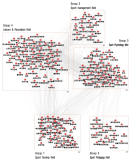
To examine the flow of knowledge structure in Korean journals of sport and social sciences over the last 10 years, this study has derived a knowledge map by conducting community analysis, one of the social network analysis methods, on Korean Journal of Sports Industry Management, Korean Journal of Sport Pedagogics, Korean Journal of Sport Sociology, Korean Journal of Sport Psychology and Korean Journal of Leisure and Recreation. According to the analysis result, the integrated knowledge map for the field of sport and social sciences was classified into 5 groups and these groups were derived to be similar to the knowledge structure of the keyword groups for the research topics of the five journals targeted by this study. Along with this result, at the same time, it has been confirmed that most of the groups shared keywords with each other. Especially, some of the keywords for the research topics of sports industry management have transferred to the research topics of leisure and recreation and those of sport sociology. Sport sociology has been revealed to be closely related to sports industry management and sport psychology. In the case of sport psychology, it has been confirmed that it is related to most of the other groups and the psychological variables for understanding human behavior can be widely used. It shows that leisure and recreation is highly related to sport psychology and sport management in terms of keywords for research topics but it is suggested that it also needs its own independent research topics. Sport pedagogics, by its nature, is an isolated field but interacts with sport psychology and attempts can be made to expand its research topics through an approach based on the concept of pedagogy for physical education.

PURPOSE This study aimed to identify and establish ESG activity assessment factors tailored for sports brands, offering a foundational framework for fostering sustainability within the sports industry. METHODS A Delphi survey was conducted between December 1, 2022, and January 31, 2023, involving university professors, sports brand executives, ESG researchers, sports marketing majors , a nd sports brand influencers. Data were analyzed using SPSS WIN 24.0 and MS Excel, encompassing research subject classification, consistency verification, and empirical analysis. RESULTS The assessment of ESG activity evaluation factors of sports brands revealed that governance, social, and environmental dimensions ranked in descending order of relative importance. Among specific evaluation criteria, the adoption of employee ethics regulations was deemed paramount in the governance evaluation area, while support for stakeholder welfare and social well-being took precedence in the social evaluation category. In the environmental sector, the production and delivery of eco-friendly, durable products held the highest significance. Further analysis, considering the weighted priorities of all evaluation factors, emphasized the importance of factors, such as the adoption of employee ethics regulations, support for stakeholder welfare, social well-being, and the production and delivery of eco-friendly, durable products. Conversely, disclosure of company information and issues, support for the underprivileged, and general shareholders' meeting or agenda for the protection of shareholders' rights and interests ranked lower. CONCLUSIONS In summary, this study validates the role of governance (G) aspects within ESG activities for sports brands, alongside environmental and social dimensions. It highlights the importance of a balanced ESG framework, particularly in an era marked by heightened social responsibility awareness among consumers. Prioritizing governance in marketing strategies not only distinguishes sports brands but also necessitates impactful promotion and advertising efforts.
PURPOSE This study aimed to test the impact of sport consumers‘ self-construal levels on their responses toward an athlete scandal by conducting a cross-cultural experimental study. In particular, it focused on sport consumers’ subsequent responses toward an athlete scandal, such as the perceived target of responsibility and perceived the main agent for the public apology. METHODS Participants (total=151; KOREA=75, USA=76) were selected for a cross-national comparative study. MANCOVA and Descriptive Statistical Analysis were conducted using the SPSS Windows program version 26.0 to validate the research hypothesis. RESULTS The results indicate that sport consumers’ responses to an athlete scandal vary across the countries. Participants from Korea reported perceived responsibility to the athlete, team, and league. Conversely, those from the United States reported perceived responsibility only to the athlete. CONCLUSIONS There are cultural differences in sport consumers’ subsequent perceptions of an athlete scandal. The present study's findings are expected to provide stakeholders such as teams and leagues with practical implications to understand better sport consumers’ responses to athlete scandals in the globalized sports industry.
Purpose Highly popular these days, eSport is inviting increasing scholarly attention and research. Scholarly work on eSport, however, remains focused on whether eSport is a “real” sport, that is, its sporting qualities and status, excluding ethical issues. This paper analyzes ethical issues about cognitive enhancement drugs often associated with eSport in order to suggest guidelines for resolving these issues. Methods First, environmental features of eSport are examined to find out types of cheating in eSport, as well as the ways eSport athletes are exposed to drugs. Next, ethical issues of cognitive enhancement drug use and why they are important are discussed, drawing upon multiple scholars. Last, this paper argues that the ban on drug use conventionally implemented in sport is not appropriate to eSport due to the characteristics of eSport. The paper concludes with possible future approaches to this issue. Results The ban lists administered by ESIC and WADA would not work for the need of eSport athletes and even run a risk of stunting the growth of eSport industries. It is thus important to think up an appropriate drug-related policy for eSport. Preemptive education for eSport athletes is also required to promote the ethical consciousness and judgment regarding drug use. Conclusions Insofar as eSport’s huge popularity leads to the increased status of eSport athletes, thereby exerting much influence on young people, ethical questions about eSport, drug use in particular, need to be urgently discussed for the sake of eSport’s wholesome development.
Purpose There is a growing number of potential demand on experiential horse riding tourism due to the expand of tourism and sports industries, however the experiential horse riding clubs are operating inefficiently. Therefore the purpose of this study is to investigate implicity importance of horse riding club’s selection attributes and analyze factors affecting positive effect on market share thereby find the way to improve operating system. Methods The survey was done among 258 horse riding tourism customers of Jeju, Gyeonggi, and Gyeongbuk provinces, and conjoint analysis to figure out the relative importance of selection attributes, and simulation to predict the market share of experiential horse riding were conducted. Results The results are as follows. Cost was the most important factor when selecting horse riding club and program, location, staff were followed by. Also, “The club that serves various activities with horse riding program at 10,000won where the condition of road and parking lot are good” had the best market share. Conclusion This study suggested the effective and efficient manners to operate the horse riding club and the political implication.